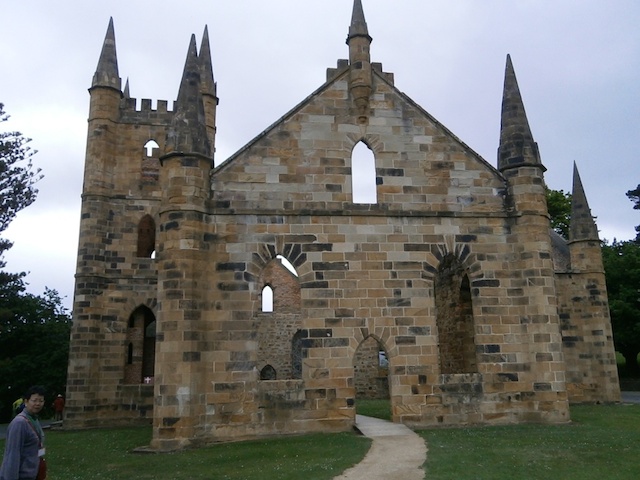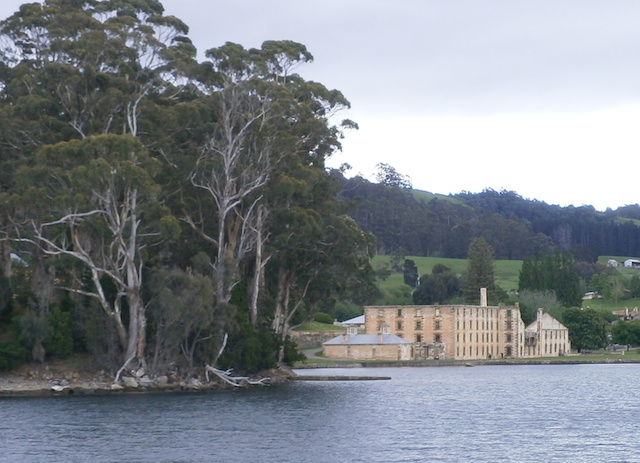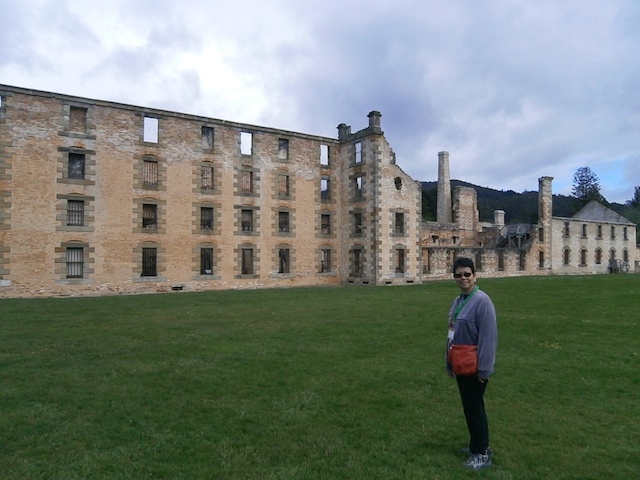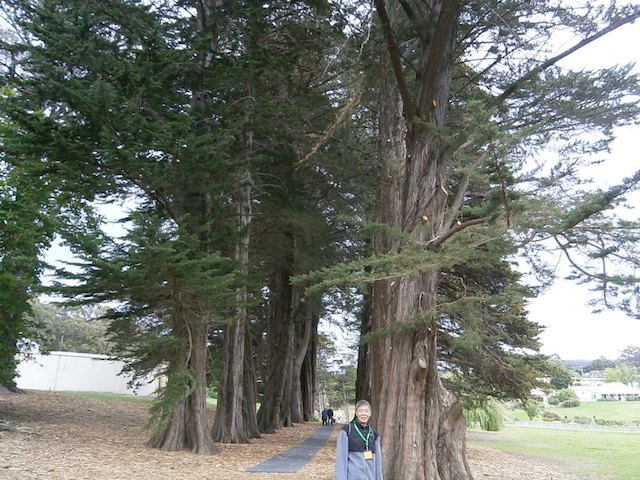Ghost stories in Port Arthur
Tasmania, Australia
Rocking chairs that slowly rock by themselves. Disembodied voices heard in a solitary, sandstone room. Paranormal sightings recorded by sensitive machines. These were the stories we heard, my husband Alex and I, before we set forth on a day trip to Port Arthur, a former penal colony about 60 kilometers southeast of the state capital, Hobart.
We reached Port Arthur mid-morning on a beautiful, sunny day. The first impression we got was an idyllic, pastoral setting: an expanse of green, undulating meadow, a brisk cool wind from the sea, a perfect day to be outdoors.
Port Arthur started as a timber station in 1830. It was named after George Arthur, the Lieutenant Governor of Van Diemen’s Land -- the former name of Tasmania.. For twenty years -- from 1833 to 1853 -- it housed the hardest criminals from England, repeat offenders from other Australian prisons ,and rebellious convicts. One can imagine the atmosphere then, where many of the worst prisoners were given the “Silent System.” They had to wear a black, heavy hood, admonished to remain silent for days on end and sent to the Separate Prison. Many became mentally ill after this deprivation of light and sound.
Geographically, Port Arthur was also desirable as a penal colony because it was surrounded by water, said to be infested with sharks, while the other side of the area was dense forest. Its only connection to the mainland was a narrow 30-meter isthmus of Eaglehawk Neck; in those days, this area was fenced and guarded by soldiers and fierce dogs.
Life during that time was not easy, and many attempted to escape: through the forest, by boat through the sea, and a few succeeded. There were also juvenile convicts then, some as young as nine years old, and they were held in a separate prison in Point Puer.
This hard life gave credence to the ghost stories that abound in Port Arthur. In fact, there was an evening Ghost Tour with a guide. And for serious researchers, there’s the opportunity for a Paranormal Investigations Experience, a late night search for occult activities using modern equipment.
Before we entered the museum, we were all asked to draw one card from a deck. I got a 2-spades, and following instructions, I went in and started with the sailing of the Enchantress, a convict ship that reached Tasmania after more than three months of sailing. The 2-spades corresponded to 17-year-old James Travis from Manchester, who “stole 10 corsets” and was sent here because he “refused to do any sort of work.”
Further on were actual voice recordings of other convicts, of their sadness and homesickness, especially those of the women prisoners, one of whom left her daughter when she set sail. Some personal effects were also seen, including books, clothes, shoes, even mirrors. Overall, it was an emotional encounter with those that were transported to this harshest of penal colonies. It was said that some committed murder (an offense punishable by death) to spare themselves of such an unforgiving existence.
We went out of the museum into the sunshine, and fell in step with one of the volunteer guides who brought us to the center of the grassy plain, where the old Penitentiary was in full view. He recounted the colony’s history, including stories about the buildings. Most of them fell into disuse and decay after the prison was closed in 1877. Two bush fires in 1895 and 1897 destroyed most of the buildings, and the place was further abandoned.
Later, the Tasmanian population decided to buy some of the land and renamed the town Carnarvon. The government then spruced up the remaining ruins, and transformed many of the buildings into their former selves, mainly for visitors.
Alex and I enjoyed walking around the buildings in the full noonday sun, and had time to walk over to the other cottages previously housing the Parson, and the “Sargeants.” From the hill where the Penitentiary was, we could see the blue waters and the forest beyond. It was a tranquil picture, so distant from the stories that these sandstones might tell.
For lunch we went over to the Town Hall, which was formerly the Asylum for mentally ill convicts. It was a pleasant walk up another hill, and we entered a warm, cozy building with shiny floor boards, and a bright cafeteria to rest our legs and have a light meal.
There was just enough time for our boat trip around the area, where we saw the Island of the Dead. Here, the dead of the convict colony were buried. However, out of the more than 1,500 graves, only 180 (those of military personnel and prison staff) were marked.
Back to the site, we explored the grounds and found ourselves in an area called the Gardens. It was reached by a small path covered with a wooden bower where many flowers, especially roses, bloomed surrounded by tall elm, oak, and ash trees. We saw the remains (after the bush fire in 1895) of what used to be the Government Cottage where the Comptroller (head of the Convict Department) stayed. Next to it was the Gothic church, formerly built by the convicts, and the boys from Point Puer. This was also later rebuilt. It was said that the convicts were forced to attend Sunday services, to help them “improve themselves.”
Further on were quaint wooden houses named the Parsonage, with a lovely wrap-around wooden porch. In one of the blogs of a paranormal researcher, it was mentioned that the parson’s wife had been barren, and wanted very much to have children. In 2011, one of the visitors to the Parsonage was a lady with her two-year-old daughter. The mother was surprised to see her child run forward and laughingly hold up both arms to an unseen being in the porch. True story, or ghost tale? —YA, GMA News








